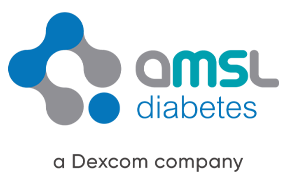T1D Terminology
Diabetes and Glucose Terms
Type 1 Diabetes
Type 1 diabetes (T1D) is an autoimmune disease in which one's own immune system destroys Beta cells in the pancreas, which are response for making insulin. People with T1D must manually inject insulin to account for the sugar in their bloodstream, to ultimately keep their glucose levels within range.1
Blood Glucose Levels
A measurement of the amount of glucose in your bloodstream at a given time.1 In Australia, this is expressed as mmol/L.
Hypoglycaemia ('Hypo')
Hypoglycaemia can be defined as low blood sugar, usually below 4 mmol/L. It can be caused by taking too much insulin, not eating enough carbohydrates, or strenuous exercise.1
Hypoglycaemia Unawareness ('Hypo Unaware')
A condition in which one cannot recognise the symptoms of low blood glucose.2
Hyperglycaemia
Hyperglycaemia can be defined as high blood sugar. People with T1D might experience hyperglycaemia if they haven’t taken enough insulin to match the carbohydrates they have eaten, or they are unwell.1
Ketones
Ketones are acids that are produced when there is too much glucose in your bloodstream, and not enough insulin. When the body doesn’t have enough insulin to convert sugar into energy, it starts burning fat and body tissue instead – producing ketones. When the level of ketones in the body gets too high, this can cause ketoacidosis (DKA).1
Ketoacidosis
Ketoacidosis is a serious condition which occurs when an individual's glucose levels remain very high (hyperglycaemia). Diabetes Australia state it gradually develops over hours or days and is a sign of insufficient insulin. Symptoms may include rapid breathing, flushed checks, abdominal pain, sweet acetone smell on the breath, vomiting and dehydration.3
It is important to note that if you, or someone you care for, are experiencing any of these symptoms above, you should not hesitate to contact 000 or your local hospital emergency department if you need immediate assistance.
Insulin
A hormone produced by the pancreas. The body uses insulin to move glucose from the bloodstream into cells where it can be used as energy. All people living with T1D need to take insulin.4
Basal Insulin
Basal insulin (also known as 'background insulin') keeps blood-sugar levels stable between meals or during sleep. It plays a vital role in managing type 1 diabetes.1
Bolus
A bolus is additional insulin given often around mealtimes to cover an expected rise in blood sugar.1
Device Terms
Insulin Pump
An insulin pump is a small electronic device that mechanically pumps programmed amounts of insulin through an infusion set into the body.5 It is an alternative to multiple daily injections (MDI).
One example of an insulin pump is the t:slim X2 insulin pump.
Infusion Set
An infusion set is a length of plastic tubing that connects the insulin pump to the body via a very small cannula that is placed under the skin.5
Continuous Glucose Monitoring (CGM)
A wearable device that tracks glucose levels using a sensor which measures the glucose in interstitial fluid.6 CGM allows users to see patterns and trends and will sound an alarm if blood sugar levels are changing rapidly, or are outside the users target range.1
One example of CGM is Dexcom G6.
Hybrid closed-loop insulin delivery
Some insulin pumps, when used in conjunction with compatible CGMs, have the ability to alter insulin delivery. Insulin delivery can either be stopped, decreased or increased based on the sensor glucose reading.1 This can help individuals achieve more time in their target range, and less time experiencing high or low glucose events.
One example of a hybrid closed-loop insulin delivery system is the t:slim X2 insulin pump with Control-IQ technology.
General Terms
Carbohydrate Counting
Counting the amount of grams of carbohydrate in food to estimate the amount of insulin needed as a meal bolus to maintain a normal blood glucose level.5
Diabetes Burnout
Diabetes burnout can occur when someone becomes frustrated with the stress or demands of their diabetes management. With diabetes burnout, they may feel less motivated to manage their condition.1
Honeymoon Phase
A period of time following T1D diagnosis when the pancreas is still able to produce some insulin. Some people find that they only need minimal amounts of insulin during this time to keep their blood sugar levels within the target range.1
References:
1. https://jdrf.org.au/living-with-t1d/t1dictionary/
2. http://danii.org.au/wp-content/uploads/2018/05/Diabetes-Glossary-A-to-Z.pdf
3. https://www.diabetesaustralia.com.au/living-with-diabetes/managing-your-diabetes/ketoacidosis/
4. https://www.diabetesinschools.com.au/resources/glossary/
5. https://www.diabetesqualified.com.au/resources/diabetes-dictionary/
6. https://www.type1foundation.com.au/glossary-of-terms
ALWAYS READ THE LABEL AND FOLLOW THE DIRECTIONS FOR USE. Read the warnings available on amsldiabetes.com.au/resources before purchasing. Consult your healthcare professional to see which product is right for you.
Last Updated: 24th August 2022
